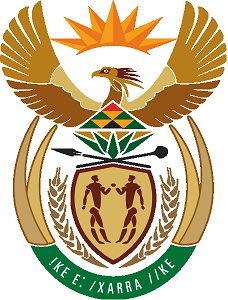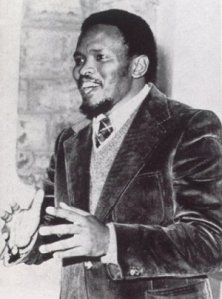My exposé of what really happened when Norway’s OOXML vote changed from No to Yes stirred up a lot of interest. I promised I’d get back with more background information. Here it is, hyperlinked into the appropriate parts of the original post.
Some people were surprised to learn that consensus is Standard Norway’s normal method of arriving at decisions. Actually, this is a general principle in JTC1, as clause 1.2 of the directives states:
These Directives are inspired by the principle that the objective in the development of International Standards should be the achievement of consensus between those concerned rather than a decision based on counting votes.
I don’t have a problem with this as a general principle. In fact, I rather like it: standards development should be a collaborative process with the goal of unifying the interests of all concerned. That’s why I was happy to go along with the general idea, especially given JTC1’s proviso that “consensus need not imply unanimity.”
The problem was that the Little One’s notion of “consensus” was different. For him, there had to be total unanimity, otherwise there was no consensus. This was reflected in the discussion of the Norwegian comments back in August 2007, when Microsoft was effectively allowed to veto any comments it disagreed with – and in his conclusion at the March meeting that an 80% majority did not constitute a consensus. Given that there was never the slightest hope of the Yes and No sides reaching full agreement, his interpretation effectively meant that the committee would not have the final word.
It turns out that there used to exist a formal procedure for resolving such an impasse. Until the reorganization of Standard Norway a few years back there were rules stating that, in the event of an inability to achieve consensus, the final decision rested with the Chairman. These rules were scrapped during the reorganization and have never been replaced. I never had occasion to know about them in the past, and the Little One was clearly not interested in informing the committee about any kind of established practice that might take control out of his hands. This is one of the issues we will be following up in our appeal against the Norwegian vote.
Since there was no voting – and so far no minutes either – this tally is somewhat subjective. However, I doubt that anyone (even those who wanted to vote Yes) would deny that the great majority were dissatisfied with Ecma’s resolution of the Norwegian comments.
One indication of the size of this majority is that 21 members of the committee signed an open letter to Standard Norway the day before the meeting. The letter (in Norwegian) lists four main reasons why Standard Norway should reject OOXML, as follows:
There is no need for OOXML as an ISO standard (since it has already been published by Ecma).
Approving OOXML as an ISO standard would be counter to the interests of users (since there already exists an ISO standard that covers the same ground).
An approval of OOXML will damage ISO’s credibility (because of the wide perception of unfair play and abuse of the fast-track process).
OOXML is substandard from a technical point of view.
These were by no means our only arguments against OOXML, but they were the ones we particularly wanted to bring to the attention of the bureaucracy in Standard Norway. The letter concluded as follows:
Each of these arguments provides grounds enough to reject OOXML. There is no consensus in the committee for changing Norway’s vote, and we therefore ask Standard Norway to uphold Norway’s No to OOXML.
The letter was signed by the following members of SN/K185: Steve Pepper, Erlend Øverby, Lars Marius Garshol, Thomas Flemming, Keld Jørn Simonsen, Martin Bekkelund, Knut Olav Bøhmer, Arne S Nielsen, Petter Reinholdtsen, Per Inge Østmoen, Thomas Gramstad, Knut Yrvin, Per-Arne Aas, Henning Kulander, Geir Isene, Trond Heier, Bjørn Venn, Anthony Lærdahl, Tom Wahlgren, Thomas Malt, Håkon Wium Lie.
Two members expressed their complete agreement with the letter but were prevented from signing it because of their employers’ general policy regarding this form of public debate; another two, who we weren’t able to get hold of before publishing the letter, have subsequently added their names to the list, making a total of 25 in all.
Most of the signatories were present at the meeting and many of them took part in the debate. Of the roughly 30 experts present, there were really only three who spoke in favour of approving OOXML: Microsoft Norway’s chief lobbyist (who spoke a lot), Microsoft Norway’s VP of Communications, and a representative of StatoilHydro, the national oil company. Two others (one from Microsoft, the other from the lobbyist’s own company) sat nodding in assent.
So the 80% figure is pretty accurate, plus/minus a couple of points.
Another interesting indicator of the strength of opinion against OOXML in Norway is the fact that every single long-time member of the Norwegian committee (i.e. those who have contributed their expertise over many years and didn’t join just because of OOXML) signed the open letter and were opposed to the approval of OOXML. So if you don’t trust the 80% figure, go with 100% of the old-timers…
The argument introduced by the Little One at the end of the meeting (but without allowing any discussion) was that we should now think “tactically”. OOXML is here to stay, he said, so from a tactical point of view we should look for the best way to ensure that it continued to be improved. We have a choice between rejecting it (and thus leaving it in Ecma), or approving it (and bringing it under ISO’s control).
You can see the logic of this argument from the point of view of a standards bureaucrat: the prestige of an organization like ISO is directly proportional to the importance of the standards it controls. Rejecting OOXML would mean leaving it in the hands of Ecma, a rival organization, and that could not be countenanced. I suspect that this is what ultimately motivated the Little One and his counterparts in many other national standards organizations – especially those, like him, who have close ties with the central JTC1 bureaucracy itself. (The Little One is apparently a member of ISO’s Technical Management Board, ironically the body that will review any appeal against the OOXML process.)
So was the Norway vote the result of corruption, as some people have suggested? That depends on what you mean by corruption, but I have no reason to claim that it was. Overt corruption is very rare inside Norway, but there is a kind of old boy network (known as “gutteklubben grei”) that works very nicely according to the principle of “you scratch my back, I’ll scratch yours.”
It will be interesting to see where the Little One ends up once we’ve removed him from his present position; I may yet have cause to modify my analysis, but as things stand my conclusion is this: what we have witnessed is an unholy alliance based on a coincidence of material interests between a large multinational corporation and a standards bureaucracy eager to maintain its own prestige. And because of that I truly fear for the future of ISO.
While we’re on the subject of corruption, a couple of words about Microsoft’s principal supporter in Norway, StatoilHydro (which has actually been accused of tolerating corruption in some of its dealings abroad). They are a big MS Office user, they participated in TC45 (the Ecma committee responsible for OOXML) and they clearly feel that OOXML is important to them.
I can understand why. An enormous amount of their intellectual capital is tied up in proprietary formats – in particular Excel – that have been owned and controlled by a vendor for the last 20 or so years. StatoilHydro has literally had no way of getting at its own information, short of paying license fees to Microsoft. Recently the company has started to realize the enormity of the mistake it has made in not treating its information with the care and respect it deserves. I would go as far as to accuse them of criminal negligence, especially as a state-owned corporation, were it not for that fact that pretty much every large organization has behaved in the same irresponsible way until recently.
So now StatoilHydro suddenly wakes up to the fact that their intellectual capital is being held hostage and starts to put pressure on the vendor. The vendor reacts by migrating to XML and publishing their specifications – a praiseworthy move in and of itself. Now the customer is assured that its information can be stored in a format that will be accessible using a wide range of tools, and that should have been the end of the story. Instead the vendor decides it needs the ISO stamp of approval in order to maintain market share, discovers an easily tamed organization that has a back-door into ISO, and manages to convince StatoilHydro that publication of OOXML as a Microsoft specification is not enough. Ownership of the specification needs to be transferred to a “neutral” body. StatoilHydro agrees to act as a fig leaf in this process by joining Ecma.
They then allow themselves to be convinced that having OOXML approved as an ISO standard is even more in their interests. Quite why they think this is beyond me. I have had several conversations with the StatoilHydro representative and it seems to me that what lies at the bottom is an attempt to find a short-term solution that will help them cover their backsides in terms of the above-mentioned criminal negligence: after all, no-one is going to be fired for maintaining the company’s intellectual assets in an ISO-approved format. The long-term problem – that the balkanization of office document standards is going to promote further vendor lock-in – is not something they seem unduly worried about. That will be someone else’s problem ten years down the line.




